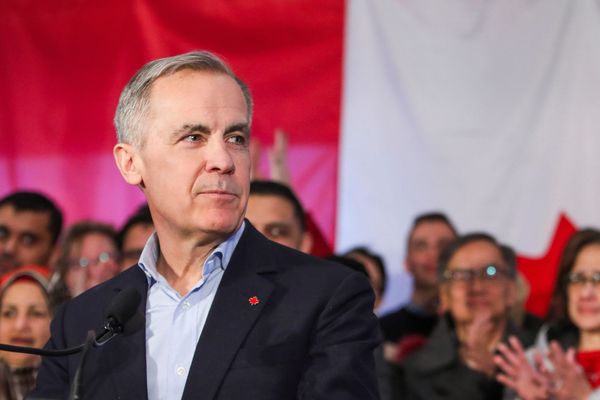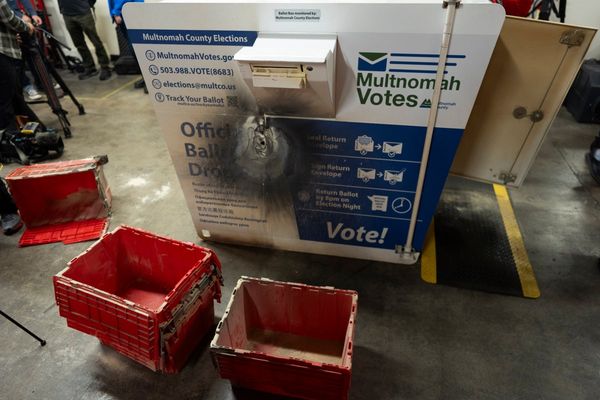
Afghanistan has been seeking peace for decades. Perhaps it is time to embrace the fresh perspective that women can bring. Afghans have already seen the benefit of having all of society, both men and women, contribute to Afghanistan’s progress. Women’s economic, social, and political contributions are strengthening Afghanistan daily by enriching the country’s societal fabric and helping to build a more stable society. Women now constitute 21 percent of the labor force. From parliament to orchestras, civil-society organizations, and sports teams, women are on the national stage more than ever before.
The question then is whether women’s contributions to peace processes are valuable. The evidence clearly says yes. This has been proved in the Philippines, Liberia, Northern Ireland, and many other regions where women have had a substantive voice in a peace process. Women’s inclusion in Afghanistan would be similarly impactful, since peace talks that substantively include women have been shown to be more likely to both succeed and last. This makes women’s participation in peace talks a national security issue.
Peace cannot be established by an agreement just between those who hold the guns. Women are sidelined because they are less often perpetrators of violence. However, women cannot just be an issue in the negotiations; they must be a party to them. Fortunately, women’s participation is a priority for the Afghan government. Their participation is reflective of the republic’s values and is being passionately pursued by the government and women alike.
Afghan women are claiming a prominent place in the public sector, and a large number of women have entered leadership positions in politics. After gaining equal political rights in 1964, women’s participation in parliament remained low, with a mere six women elected in 1965, making up only 2.2 percent of the parliament. Women now make up 28 percent of the Afghan legislative body—higher than the global average. Afghan public approval of a woman’s right to vote is at a record high of 89.3 percent.
Women are in high-level, decision-making government positions to an extent that is historically unprecedented. Afghanistan has a female deputy minister of defense and deputy minister of the interior, and there are around 6,000 women in Afghanistan’s national security forces. Women’s inclusion in national security dramatically increases intelligence capabilities, because women have access to populations and situations that men are often excluded from. They offer a unique perspective to security operations, and the information they provide makes both Afghanistan and its allies safer.
This progress has extended beyond Kabul. Since 2001, more than 150,000 Afghan women in rural areas have been elected to serve as their communities’ representatives on community development councils. Women’s participation in government ensures a more accurate representation of society, and their presence has been shown to restore trust in government. They are also able to increase the government’s focus on issues such as social welfare, legal protections, and government transparency, all of which contribute to state stability.
Women are skilled at engaging at the community level and strengthening civil society. They have historically played a key role in reintegrating ex-combatants into communities around the world. In Afghanistan, women have successfully encouraged local insurgents to participate in peace talks, coordinated with the wives of insurgents to facilitate several hostage releases, and worked in schools and civil-society organizations to counter extremism.
Similarly, women’s participation has a positive influence at every phase: peacemaking (making a deal), peace building (crafting mechanisms to implement the deal), and peace management (maintaining peace).
When making peace, there is a positive relationship between the strength of women’s influence and the likelihood of agreements being both reached and implemented. This is in part due to women’s skill in moving decision-making processes forward through their ability to promote consensus, prioritize inclusivity, and increase society-wide support. Last year, 15,000 Afghan women from across all 34 provinces participated in a peace jirga, a traditional consultative assembly. This radical inclusivity led to a powerful statement from all the women of Afghanistan on their demands and vision for peace.
While building peace, women’s commitment to inclusivity and open dialogue allows them to build more broad-based public support. They are more likely to include rural areas that are often isolated from the process and ensure the participation of marginalized groups. Women are also more likely to focus on social and humanitarian issues when implementing peace deals. The inherent value of addressing these issues is clear, but they also contribute to stability in the long term.
Finally, women increase the success of peace management. Women have been shown to push for more concrete, fundamental reforms for post-conflict reconstruction efforts, such as establishing commissions that monitor the implementation of the peace agreement. Women’s efforts to ease tensions after a peace agreement are so central to reintegration that women are most frequently cited by ex-combatants as influential figures in their reintegration. Additionally, peace processes that include women are 35 percent more likely to last for at least 15 years, according to a quantitative analysis of 182 peace deals signed between 1989 and 2011.
Women also have a role in shaping the future of the country by fostering a culture of peace at the nucleus of society: the home. With 64 percent of the Afghan population under the age of 25, the power of mothers should not be underestimated. A consistent correlation is found between childhood exposure to abuse and later violent behavior. A recent study indicated a strong relationship between women’s disempowerment at the household level and national levels of terrorism. Setting a precedent of terrorizing women in the household sets a precedent for terrorist violence in adulthood as well.
The relationship between women’s security and state security is clear. The physical security of women has been shown to be the strongest predictor of a secure, peaceful state. A 2008 study at Harvard University showed that if a single variable had to be selected to estimate state security and peacefulness, women’s physical security is a more accurate predictor than levels of democracy, wealth, and faith. There is also a strong correlation between gender inequality and both intrastate and interstate warfare, and between women’s empowerment and the number of Islamic State foreign fighters that a country produces. When there is a war raging in the home and sexist oppression is normalized, a culture of violence, oppression, and war will also be perpetuated.
Afghanistan has been stuck in a culture of war for too long, and women can play a major role in fostering a culture of peace. The omnipresence of war and insecurity keeps citizens focusing more on how to divide resources now, rather than how to multiply them in the long term. In a culture of war there is no faith in the future and everything is a matter of urgency, so the collective good is disregarded. This exacerbates corruption, and pessimism and skepticism become the default mode of the population.
In order to move forward, a culture of peace needs to be fostered in Afghanistan. The country has already made enormous progress in this regard. Once women regained their agency and mobility in 2001, they slowly but steadily reintegrated into society as equal citizens, helping to shoulder the responsibility of shaping a better future. Female literacy has nearly doubled since 2011, enabling women to contribute more substantively to Afghanistan’s progress. Furthermore, Afghanistan’s gross domestic product has nearly quintupled in the past 19 years, in part because of women’s participation in the economy. Women are now working as artists, athletes, and musicians. They are enriching Afghan culture, and their presence in these fields serves as a symbol of security and a budding culture of peace.
In order to be truly sustainable, peace must be inclusive, broad-based, and reflective of the needs and aspirations of all of society. Therefore, women need unambiguous constitutional protections of their rights to avoid regression. Both Afghanistan’s 1964 and 2004 constitutions explicitly protect against sex discrimination. In fact, in what is essentially a bill of rights in the 2004 constitution, gender equality is the very first right outlined in Article 22, articulated before even the right to life or liberty. In Article 149, the Afghan Constitution says amendments cannot affect “the tenets of … Islamic Republicanism” and that “amending fundamental rights of the people shall be permitted only to improve them.” Peace negotiations must occur within this constitutional framework and cannot entail negotiating away fundamental rights. A democracy and rigid constitution are the best way to ensure women’s equality is explicitly protected.
If the goal of negotiations is not to reduce violence temporarily but actually to build a lasting peace, then it is important for women to be substantively involved at every level. President Ashraf Ghani has already ensured that the government’s negotiation team is inclusive of women. Four of 21 team members—about 20 percent—are women. A quota system is helpful, but does not in itself guarantee a desirable outcome for women. What is most important is that women are empowered and men are convinced to influence the process positively in order to achieve an outcome that both reflects and secures all of society’s interests.
In order to achieve this, supportive mechanisms need to be put in place. Firstly, the preservation of the republic system and equal rights for women needs to be nonnegotiable in the peace talks and remain enshrined in the constitution. Additionally, women could be given veto power during the peace talks on issues that would impact them. International allies should continue to hold Afghanistan to high standards in order for aid to be continued. Global funds should be explicitly conditioned on the preservation of the progress women have made and on human rights more broadly.
Regardless of how the protection of women’s rights is achieved, one thing is clear: Women’s involvement is crucial. Women are the centerpiece of peace.







